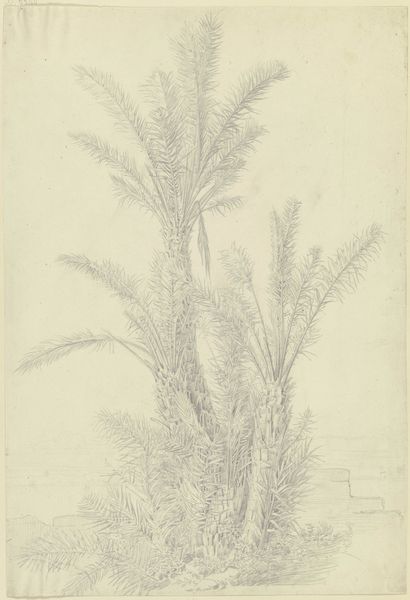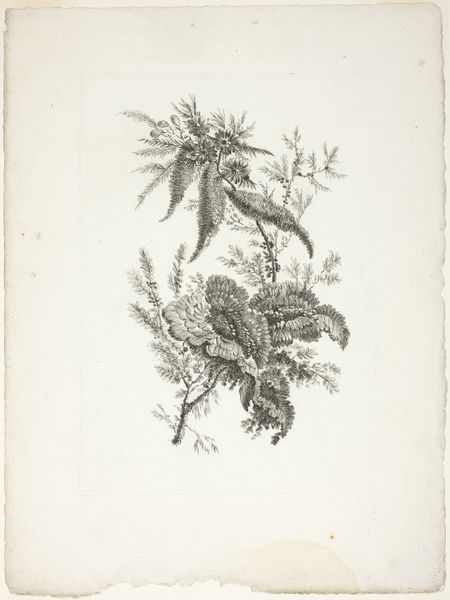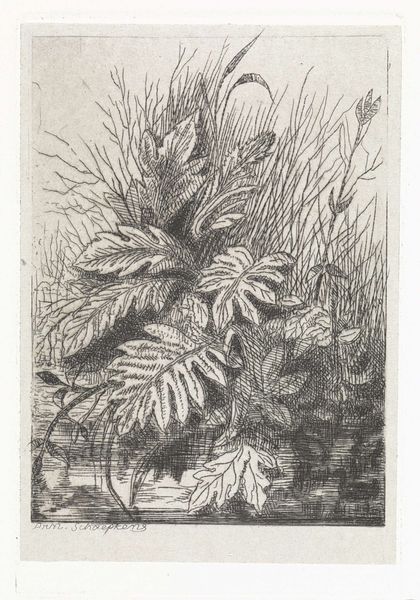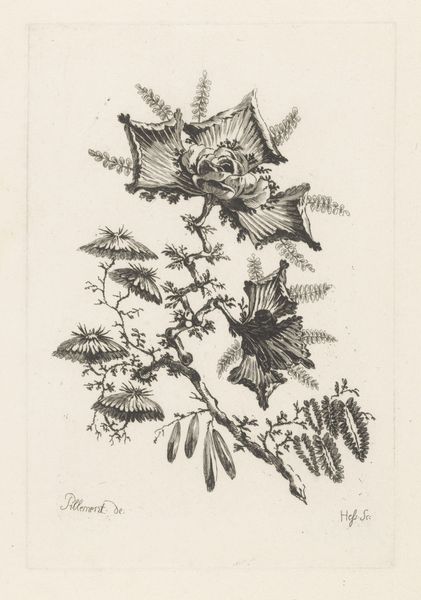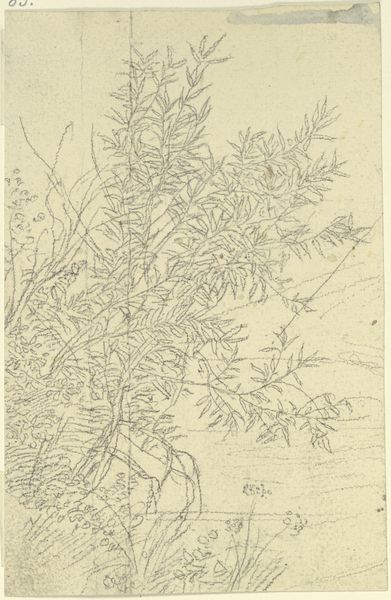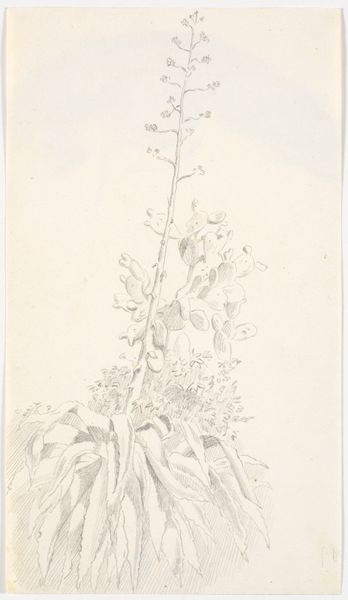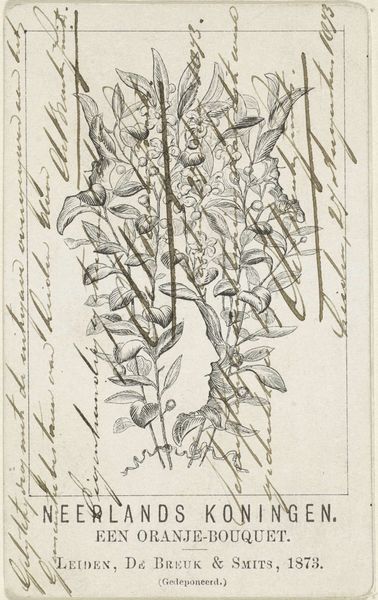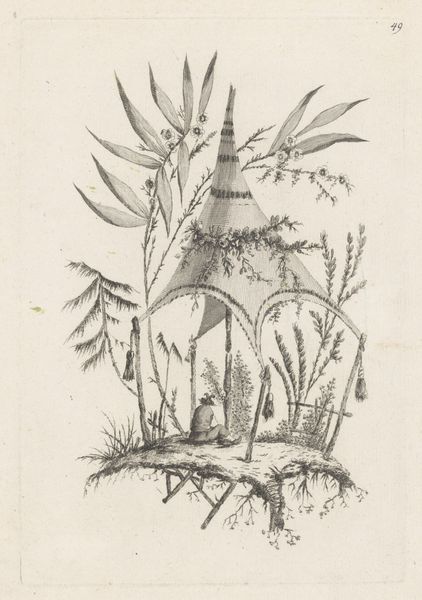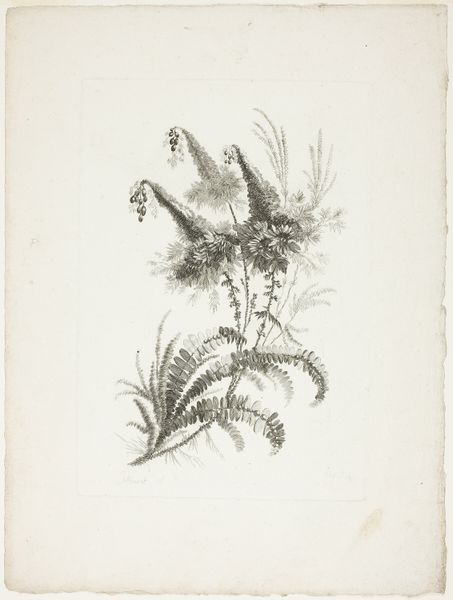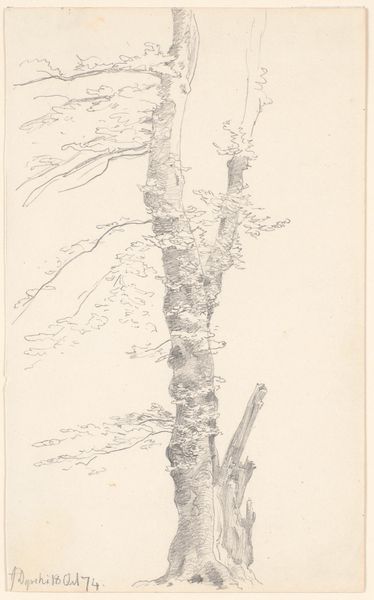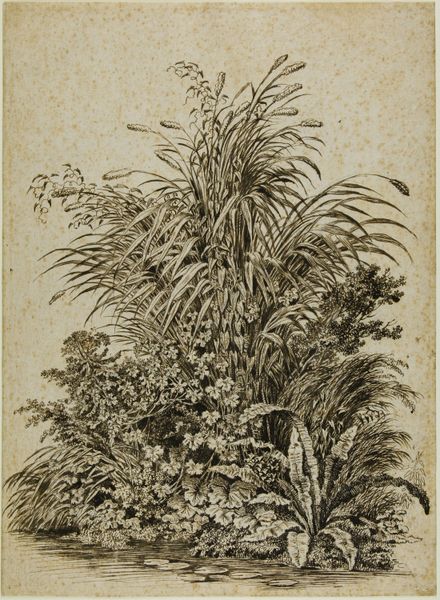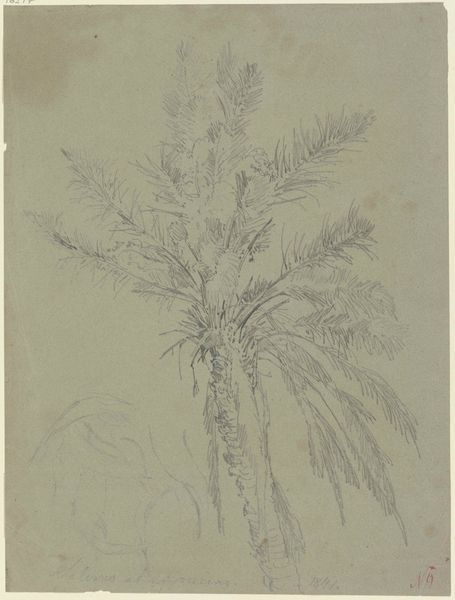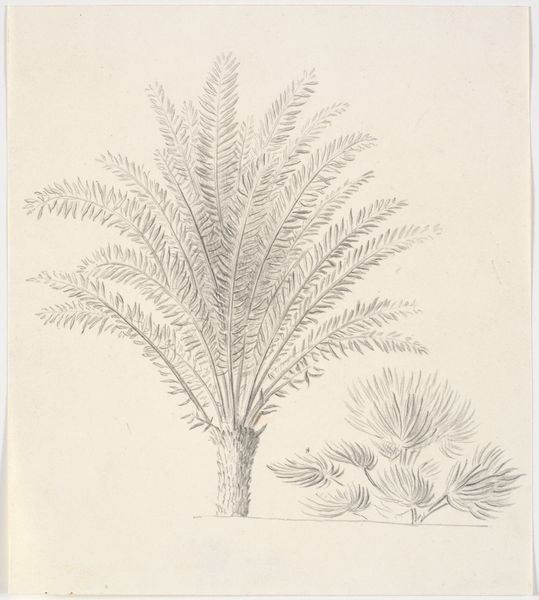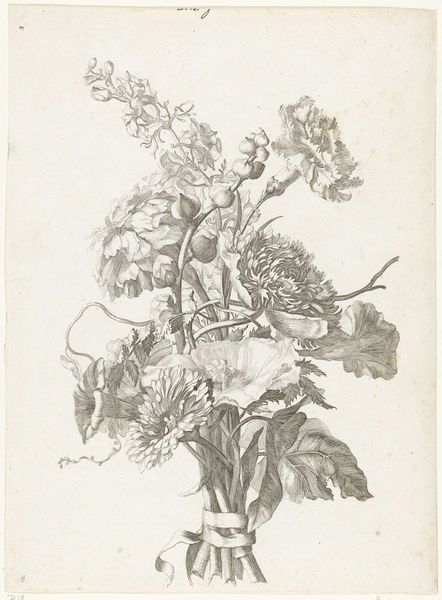
drawing, ink, pen
#
drawing
#
ink drawing
#
pen drawing
#
ink
#
pen
#
naturalism
Dimensions: height 154 mm, width 104 mm
Copyright: Rijks Museum: Open Domain
Curator: "Planten," dating between 1831 and 1904 and attributed to Arnoud Schaepkens, strikes me immediately as a space carefully defined by varied line work. What's your first impression? Editor: A bit melancholic, isn’t it? It feels… incomplete, or maybe more accurately, as though the process of nature is incomplete here. It feels almost spectral, even. Curator: That sense of incompletion, I think, arises from the materials themselves. Look at the ink, applied with a pen in delicate, overlapping strokes. It speaks of process—the act of careful observation translated through repetitive, skilled hand movements. I wonder about Schaepkens' choice to depict something so obviously ‘natural’ with such industrial precision? Editor: Precisely! We must consider Schaepkens working within the shifting socio-political and cultural landscape of the 19th century, grappling with evolving notions of nature amid accelerating industrialization. Consider the potential anxieties related to progress and a sense of loss of the natural world. How do these linear marks attempt to reclaim or redefine what is nature itself, a site that is increasingly a space for contestation? Curator: That tension is really clear. We also can’t overlook how a drawing—especially a pen and ink drawing—becomes a commodity, part of an emerging art market reliant on craft skill for middle-class consumption. This creates the possibility of these “natural” forms entering different social environments altogether. It changes who gets to define what “nature” means. Editor: Absolutely. Who has access to nature? Who benefits? What meanings and values are being produced and disseminated alongside these plants? The lack of color here, its graphic black and white, speaks volumes. This is not nature experienced, but nature reproduced, filtered through someone's own eye, shaped and delivered by his pen to specific viewers and buyers. Curator: Indeed. It serves to remind us that depictions of nature are never neutral, always mediated. This mediation makes them active participants within complex human systems. Editor: Examining the legacy of naturalist traditions critically helps us think through issues related to ecological crisis, class, and colonial extraction of natural resources even today. Curator: So while we observe the materials that formed "Planten", we must recognize that these elements themselves bring this artwork into a larger sphere of questions about production and environmental power. Editor: Right. It reminds us to consider the impact images have on social perceptions and to challenge established systems and unequal access.
Comments
No comments
Be the first to comment and join the conversation on the ultimate creative platform.
